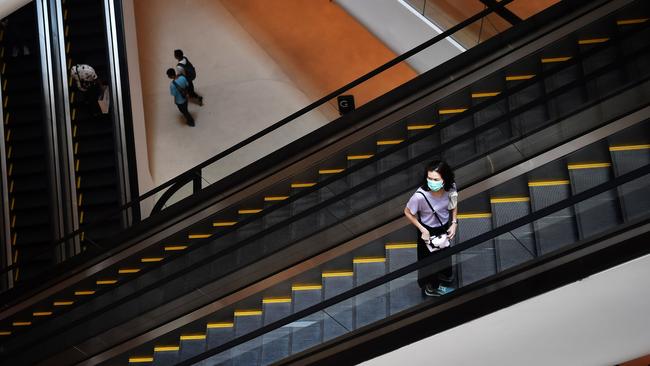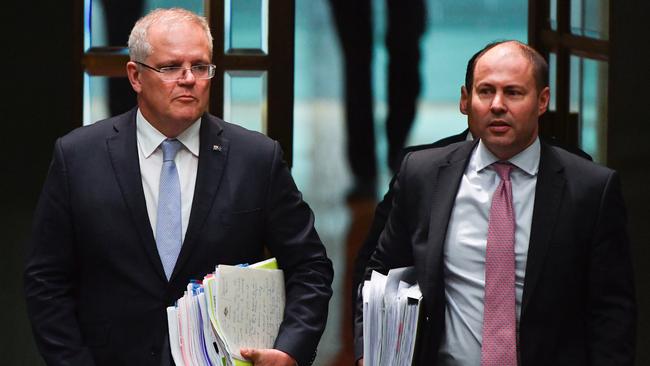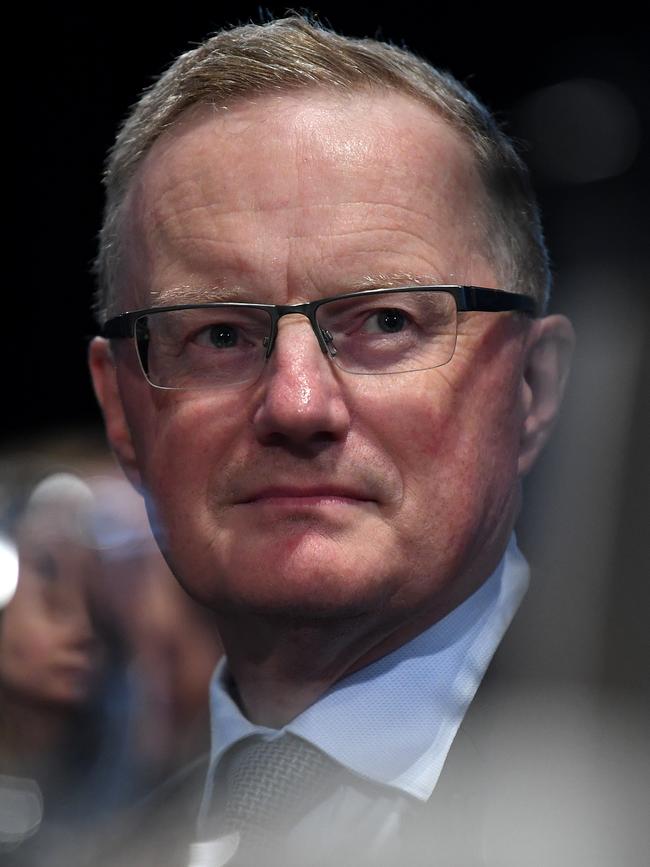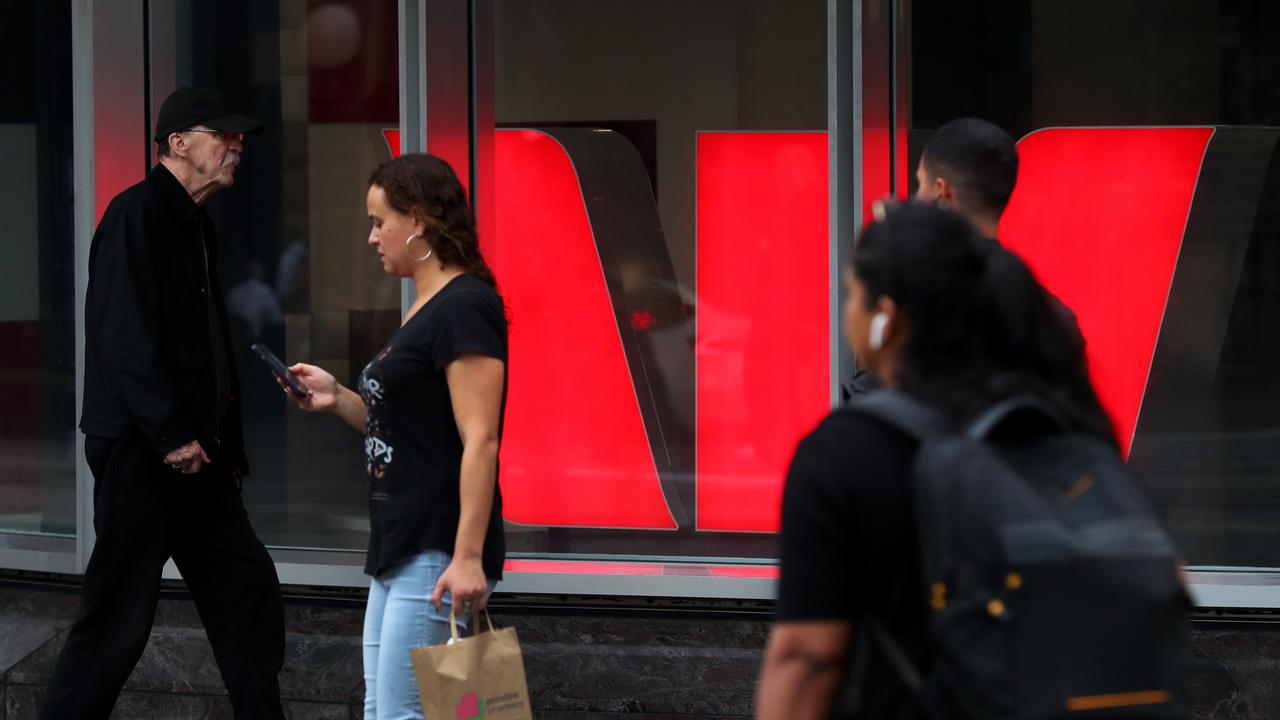Race to immunise slowing economy as outlook dims
As the outlook dims, regulators have tried to limit the damage.

By the time Australia’s sharemarket closed on Friday, February 28, down a hefty 3.25 per cent over the day to close out a 9.8 per cent collapse over the trading week, the boffins at the Reserve Bank had essentially already made up their mind: there would be a new record low for the official cash rate come Tuesday.
Over the weekend, financial markets had come to the same conclusion, as China — the world’s second-largest economy and epicentre of the spiralling coronavirus crisis — released data showing manufacturing activity had fallen off a cliff, with the purchasing managers index tumbling to its lowest reading since 2004.
The figures led to a rush of money managers in Australia gearing their portfolios for an imminent RBA rate cut, lifting the implied market pricing for a 25 basis point rate cut from 18 per cent likelihood on Friday to 87 per cent by Monday morning — an almost certain bet.
It was at this point that Josh Frydenberg, in Canberra for another parliamentary sitting week alongside briefings with Treasury about the threat the health crisis posed to the economy, and Scott Morrison joined a phone hook-up with RBA governor Philip Lowe and deputy Guy Debelle, who were in Sydney handling nightly conference calls with global regulators ensuring financial markets and economies were prepared for any fallout.
As the COVID-19 virus spread more quickly than expected, causing more disruption to business activity than was earlier thought when the epidemic seemed mostly contained to China, the RBA resorted to using new “creative” ways to update its read on the health of the economy.
The central bank, which was just a day away from holding its monthly board meeting, was used to updating its economic forecasts just once a quarter. But by using data sourced from its business liaison program, measuring airline arrivals and looking at student visas, the RBA could foresee the shortfall in university fees, tourism and the associated services sector would wipe half a percentage point off growth over January, February and March.
The impact of the bushfires was expected to drag on GDP growth by a further 0.2 per cent, so it was likely the Australian economy was now staring down its first recession in 29 years.
With no lingering doubts about the RBA’s course of action, Frydenberg on Monday night called the chief executives of Westpac, the Commonwealth Bank, ANZ and NAB and warned the bankers to pass on any reduction in the cash rate to customers.
The Prime Minister made the threat public the next morning, warning the lenders to “do their bit in supporting Australians as we go through the impact of the coronavirus” just hours before the RBA cut rates to a record low of 0.5 per cent — 2.5 per cent lower than the trough reached at the height of the financial crisis a decade earlier.
The RBA said the coronavirus had “clouded” the near-term outlook for the global economy.
“It is too early to tell how persistent the effects of the coronavirus will be and at what point the global economy will return to an improving path,” Lowe said.
It was the first time in five years the banks immediately passed on the full 25 basis point rate cut.

The sharemarket paused its run of losses following the RBA rate cut, bouncing 0.7 per cent on the belief central banks around the world would rescue financial markets from the crisis.
But a mistimed double-rate cut by the US Federal Reserve on Wednesday spooked investors, and global markets have continued to wobble. The ASX200 finished the week down 3.5 per cent, for a 13 per cent slide in a fortnight.
Since the first reports of the coronavirus outbreak, the looming pandemic has been defined by uncertainty. Experts are unsure how deadly it is, although it’s considered more lethal than the seasonal flu. Authorities don’t have a handle on how quickly it has spread, or how severe the crisis is in countries such as China, Iran and Indonesia.
Economists are wondering how deep and prolonged the drop in business activity would be, and markets are grappling with dramatic volatility as investors take risk off the table.
Getting on the front foot was the Australian Prudential Regulation Authority. In the first week of February, when the epidemic still seemed mostly restricted to China, the regulator sent letters to financial institutions to check whether they had plans in place to be able to operate if there were major disruptions to their staff and financial markets.
APRA is continuing to ensure “institutions that are at the core of the financial system” are planning for a “range of scenarios” and can continue to operate in any situation. A number of large banks have accelerated contingency plans in the last week and are splitting offices into teams of two, with some employees forced to work remotely while others are on deck.
“The build-up of financial resilience in the system over recent years has meant that the system is well placed to ride out short term volatility in financial markets,” APRA chair Wayne Byres told parliament this week. “But obviously if there’s any longer term disruption that will require a fair bit of vigilance,” he said.
The Australian Securities & Investments Commission has said it is working with large institutions and the Australian Financial Markets Association to ensure markets remain open during the coronavirus outbreak.

ASIC Commissioner Cathie Armour has already met with the International of Securities Commissions to talk about “potential market impacts” while the regulator has also set up a working group to monitor the threat.
On Wednesday, CBA chief Matt Comyn sent a note to staff outlining the uncertain path forward through the coronavirus following the impact of the drought and bushfires, telling them the bank was working with health authorities to guard their safety.
CBA’s staff in China are working from home, while employees in its critical functions teams in Singapore are split, with half working from home and the other half in the office. Hong Kong employees are also mostly working from home. Across the whole bank, about 80 per cent of its employees are in the office.
By Wednesday night, Frydenberg joined a conference call with the International Monetary Fund, as it announced it was making $US50bn available for poorer countries to help them weather the crisis. The local sharemarket had just tumbled 1.7 per cent in a day, following Wall Street lower after the surprise US Fed rate cut.
That same evening, RBA deputy governor Guy Debelle had made the trip down to Canberra, where he warned politicians the central bank was almost out of monetary policy ammunition as the cash rate headed towards zero.
“We’ve got the capacity to reduce rates one more time,” Debelle said. “We have one interest rate cut left.” At that point, the central bank is expected to embark on a unconventional monetary policy program.
By Thursday, the Treasurer was speaking to his state and territory counterparts on a phone hook-up, following meetings of the Expenditure Review Committee to discuss a stimulus program.
On Thursday, Standard & Poor’s credit analyst Anthony Walker warned state economies were vulnerable to the “negative effects of the widening COVID-19 epidemic”. Westpac economist Elliot Clarke on Friday said the risks associated with the virus were constantly evolving. “What was initially seen as a China-centric shock is now certainly a global concern,” Clarke said.



To join the conversation, please log in. Don't have an account? Register
Join the conversation, you are commenting as Logout